

Landscape architecture program : youtube.com/watch?v=qpchoaGAOjM
The power of a master plan
October 04, 2022
New landscape architecture majors explore Delaware public spaces
On the approach to the Cape Henlopen State Park in late August, beach-goers stopped in their tracks for a few seconds and audibly wondered what was going on over at the beach house picnic area.
There, a dozen and a half young adults were holding reels of tape measure, recording the size of each other’s feet, as well as arms, legs, total height, and width of gait.
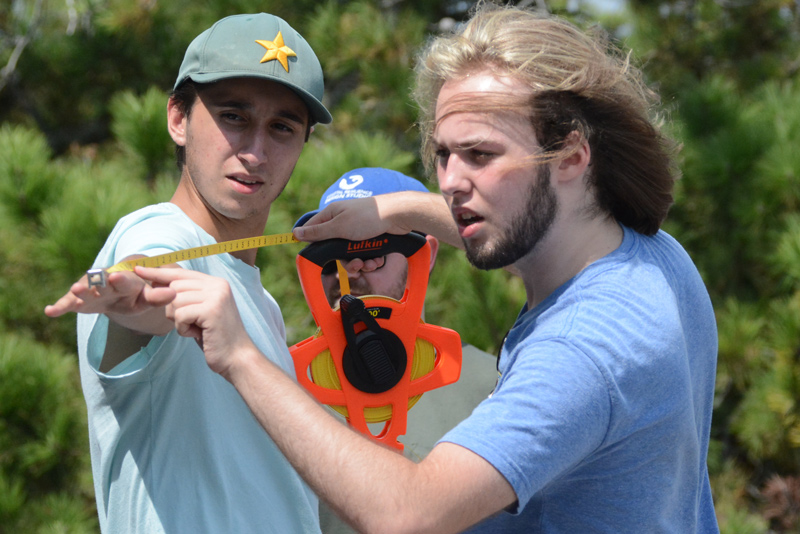
What seemed like an out-of-place activity for the popular beach spot was in fact a purposeful exercise on anthropometry or measuring how humans fit and use the landscape.
The visit at Cape Henlopen was part of a weekend getaway for new and transfer students enrolled in the University of Delaware’s bachelor of landscape architecture (BLA) program. For the past four years each August, the program’s faculty organize a two-day adventure, known as the Bridge Program, through notable Delaware landscapes, all the while asking their students to consider cultural values as well as design and functional features of a successful public space. One important consideration is how humans interact in places like public parks.
“As designers, students need to understand the human scale in the landscape and how people experience and comprehend the elements and space around them,” said Zachary Hammaker, Instructor who led an exercise he called, “Anthropometry or Human Scale?” “Students recorded their own personal dimension to build awareness of comfortable measurements for things like walkways, seating, and ideal view heights.”
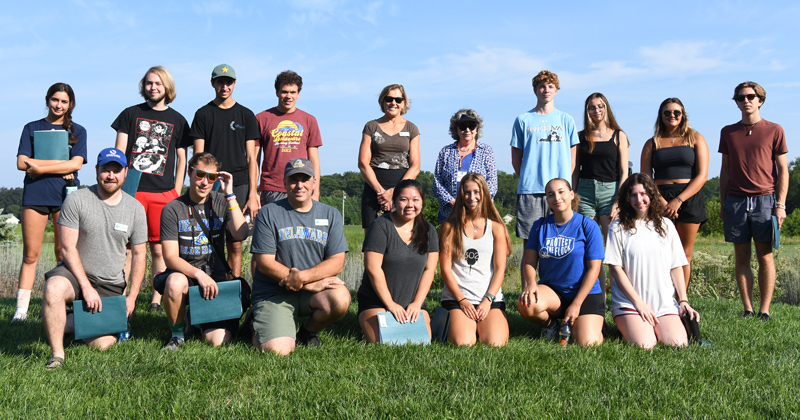
The goal of the Landscape Architecture Bridge Program is for students to consider (or reconsider) local landscapes through a critical eye. The program included a tour of White Clay Creek State Park, a visit to an indigenous landscape project in Kent County and a journey to the coastal plain of Southern Delaware.
One day began at the UD College of Earth, Ocean and Environment Hugh R. Sharp Campus in Lewes, where students evaluated the suitability of four separate tracts for a future outdoor classroom. Led by Eric Bardenhagen, associate professor of landscape architecture, students weighed the proximity and function of the other buildings on campus, building system sounds, nearby road noise, existing campus walkways, gardens and paths, sun exposure and shadows and topography.
After lunch at the Lewes CanalFront Park and listening to the career experiences of UD Class of 2018 landscape architecture alumna Maggie Heffernan, the group biked through trails over to Cape Henlopen State Park to complete their human scale activity.
That day concluded with an informal dinner hosted by Rodney Robinson, who is a CANR graduate and adjunct professor of landscape architecture. Robinson is a founding partner of Robinson Anderson Summers, Inc. | Landscape Architects. Robinson’s firm designed a master plan for the Delaware Botanic Garden at Pepper Creek in Dagsboro, which was the first stop scheduled for day two.
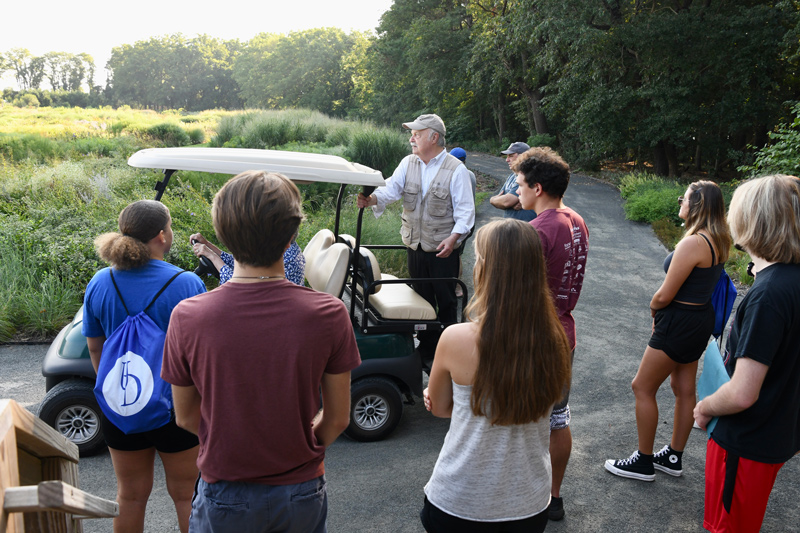
From what was once raw agricultural land, 37-acres in all, framed on the east by 1,000 feet of tidal waterfront, students observed how far along the initial plan designed in 2017 evolved. The progress is impressive.
Students walked through the paths they were seeing on paper, and directly experienced the master plan’s written goals as a garden “unique among American public gardens in that they will represent a true grass-roots effort to create a place of horticultural splendor.”
Sue Barton is a professor and Cooperative Extension specialist of ornamental horticulture.
“Students hear what Delaware Botanic Garden has implemented from their master planning process and get a chance to engage in a master planning exercise to try their hand at planning what their next steps might be based on the mission and objectives the DBG board has outlined for their future,” Barton said.
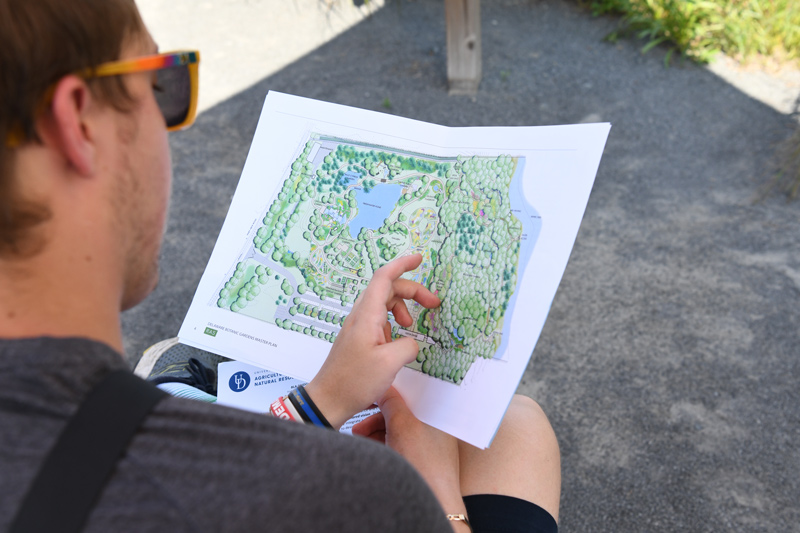
After a warm welcome from DBG’s staff, students strolled on a crushed granite pathway surrounded by a spectacular meadow garden designed by renowned Dutch Plantsman Piet Oudolf.
“This is an excellent opportunity for BLA students to learn how master planning helps build a major endeavor like establishing a botanic garden from the ground up,” Barton said.
The tour featured winding woodland paths leading to a living shoreline — a large waterfront at Pepper Creek. As they exited the woods, students came upon the DBG’s newest feature, a specially designed public restroom in contention for a national design award for a public restroom. Yes, there are awards even for restrooms.
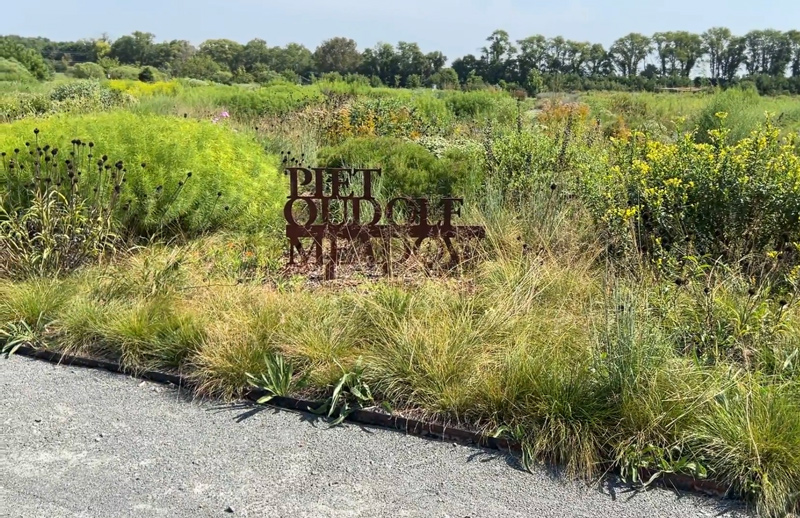
Afterward, students and the faculty soaked in the unique landscape of Trap Pond State Park in Laurel. Because public parks are created to be experienced, they paired off and paddled in canoes through the Cypress Swamp, home to America’s most northern stand of cypress trees.
The Bridge Program weekend ended with a visit to the Fort Branch tribal land restoration project for the Lenape Indian Tribe of Kent County. In recent years, landscape architecture students identified goals that include removing invasive plants and replacing them with native plants that are edible or that have a spiritual significance to the Lenape Tribe.
A goal of the program was to put students at ease, and introduce them to instructors, professors and the curriculum in a creative way. Fiona Gorman said she looked forward to meeting the new students.
“I'm going to be working with them in the future and get them excited to be a part of our community and our major,” Gorman said.
Gorman is scheduled to graduate in 2024 and serves as a teaching assistant for the program.
“This has been a weekend of discovery and really getting to know my major more and getting my feet into the whole experience and getting closer with my classmates,” said Sakhi Phen, a sophomore.” “Landscape architecture was a recent discovery for me. What attracted me to it was the amount of creativity and my personality that I can put into my work.”
For first-year student Chase Correll, choosing a career in landscape architecture gives him an opportunity to creatively impact the environment.
“This weekend was a good introduction to the program itself,” Correll said. “It was good to meet everybody and some of my professors. It’s nice to be able to see what it's going to be like in the next few years.”
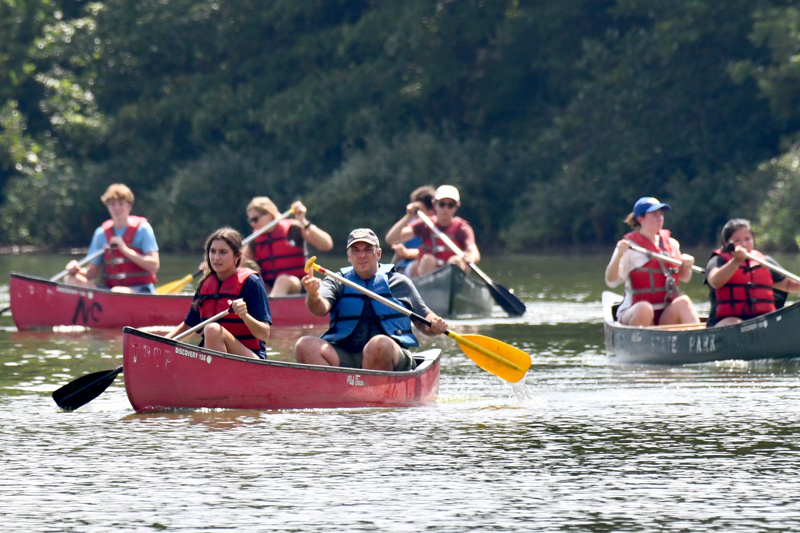
Contact Us
Have a UDaily story idea?
Contact us at ocm@udel.edu
Members of the press
Contact us at 302-831-NEWS or visit the Media Relations website

